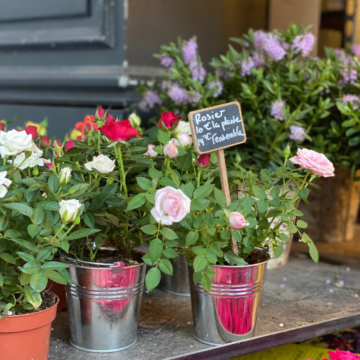Blog
Why are red roses considered romantic?

Throughout history, the red rose has stood for passion, love, and romance. It’s probably one of the most recognisable symbols in the world and is nearly synonymous with Valentine’s Day. But why? Why is this particular flower so universally associated with love? The answer lies in its history – and it’s a fascinating one!
Among the Greeks and Romans
In Ancient Greece, red roses were often associated with Aphrodite, the Greek goddess of love, beauty, and sexuality. According to mythology, Aphrodite’s beauty was so great that roses sprang up wherever she walked. As a result, red roses became a symbol of love and desire, and were often used in romantic gestures and rituals. Red roses were also associated with Adonis, the Greek god of beauty and desire. According to mythology, Adonis was killed by a wild boar while hunting, and his blood stained the white roses that grew around him, turning them red. As a result, red roses became a symbol of sacrifice and passion.
In Ancient Rome, red roses were used as a symbol of power and authority. They were often used in official ceremonies and given as gifts to honour or show respect to important figures. It was in Ancient Rome that St. Valentine’s Day originated, as a celebration of the Roman god of fertility, Cupid. It was believed that Cupid had the power to bring love and happiness to people’s lives.
In the Middle Ages
It was during the Middle Ages that the rose bloomed as a symbol of love and passion. Red roses were meant to be given by knights to their ladies, and they were often used in poetry to describe a woman’s beauty. The colour red itself was associated with purity, innocence, and virginity – symbols attached to the Virgin Mary. Red roses as a symbol of sacrifice and passion were often used in religious ceremonies to represent the suffering of Christ.
In literature and art of the Middle Ages, red roses were often used to represent the intensity of love and the depth of emotion felt by lovers.
In the 14th and 15th centuries, Valentine’s Day became more commercialised as merchants and traders began selling cards, flowers, and other gifts to celebrate the holiday. The red rose became particularly popular as a symbol of love and passion.
Victorian Era
The Victorian Era was known for its strict social rules and emphasis on etiquette. Love was a big deal back then, so red roses (considered the symbol of deep love and passion) were often given as a sign of love and commitment in relationships, or as a way to express strong emotions such as desire and jealousy. In addition, the rose was seen as a symbol of refinement and was often used in literature and poetry as a metaphor for beauty and innocence. The resurgence in this era of flowers having hidden meanings birthed the Victorian Language of Flowers, in which red roses were solidified as the flower to symbolise romantic love.
A modern take on red roses
Nowadays, one of the biggest days of the year for florists in Valentine’s Day, as people shop for a beautiful bouquet of red roses – the symbol of February 14th. The meanings of passion, love and beauty have carried through the millennia as we carry on the tradition of giving flowers on this day of celebration. Modern times have seen new takes on red roses, such as dried roses, pressed roses, roses in the shape of a bear or a heart etc.
The holiday may have evolved over time, but the meaning behind the red rose and its connection to romance and Valentine’s Day remains the same around the world. When you go to buy your bouquet this year, think about all the history that’s gone before you to reach this point!
For an easy guide on caring for your beautiful roses, check out our blog on caring for cut roses. Or, if you’re looking for something different to give this Valentine’s Day, take a look at the other romantic flowers we recommend.
